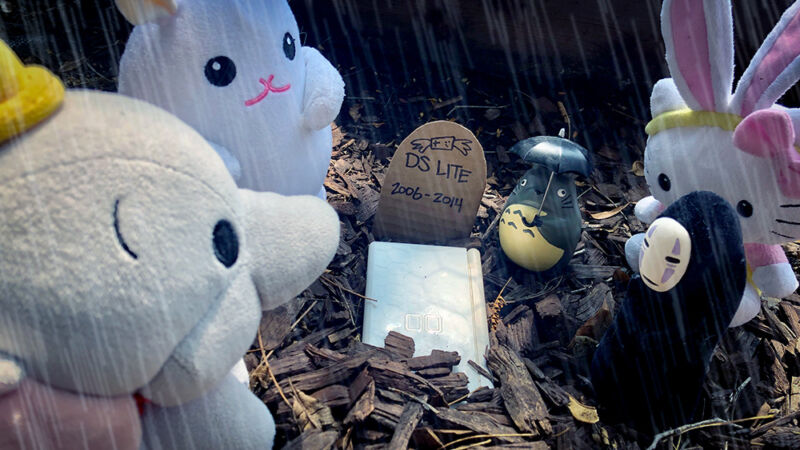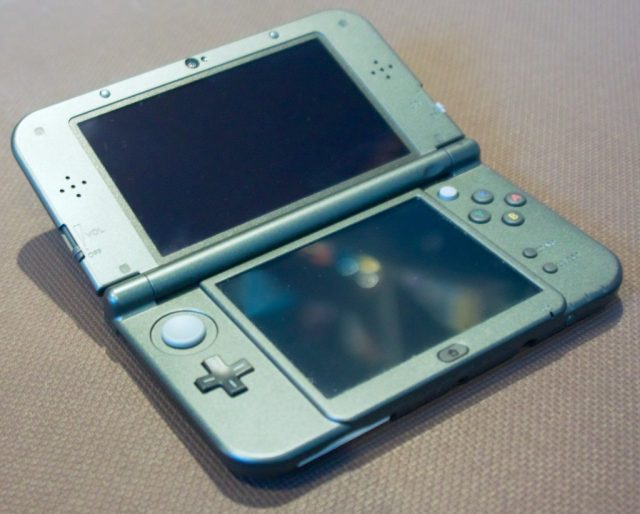
Aurich Lawson
In December 2004, my boyfriend showed up at my apartment door carrying a box. “I brought you a present!” he said, clearly excited. “Open it!”
‘Tis the season, I thought, unwrapping it. I turned the box around. “A… Nintendo… DS? Is this, like… a Game Boy kind of thing?”
As I fought my way through layers of cardboard and plastic to open my new toy, he pulled a matching unit out of his own messenger bag, opened it up, and began to explain. I had never owned a portable console—I’d barely ever even owned a regular console; I was a lifelong PC gamer—and while I tried to greet the gift with good cheer, I bluntly had no idea why on Earth he had given it to me.
He could tell I was not entirely on board. “Trust me,” he said. “It’s great for the train.” I lived in Boston, he lived in Manhattan; we spent a lot of time on trains. “You’re going to love it.”
I hate to give him bragging rights, but: He was right. My relationship with the Nintendo DS outlasted my relationship with him by more than a dozen years, and I am sad to mourn its passing.

Enlarge / The 3DS XL line was meant for bigger hands and chunkier pixels.
Kyle Orland
This week, we now know, marks the end of an era: after 16 years and almost a dozen total models, the Nintendo DS family of handheld gaming systems is no more. Nintendo sold well over 200 million cumulative units of the dual-screened devices over the years, but times change.
I was not the only person to greet the launch of the Nintendo DS with more bewilderment than joy. The DS was a pretty weird little device when it launched, occupying a niche I wasn’t yet aware I wanted it to fill.
Video games on the go were not a new idea in 2004. The DS was in many ways simply the next iteration on Nintendo’s incredibly popular Game Boy line of handheld consoles, which first launched in 1989. The DS wasn’t even the first one to fold: the last major product in the Game Boy line, 2003’s Game Boy Advance SP, featured a rechargeable internal battery and flipped easily shut into a clamshell, convenient for dropping back into your pocket or purse at any time.
The DS, though, was optimized for the dawn of the 21st century. It had Wi-Fi support from the start, primed for a world of multiplayer games yet to come. And the “dual” in “dual screen” was the real selling point. In 2004, the idea of a working, affordable touchscreen device in your pocket was a cool new concept—one that early DS games, alas, mostly used for gimmicks if they used it at all.
I didn’t use my launch-model “phat” DS all that much at first. I was wrapping up my last semester of grad school, and I lived close enough to campus that walking was honestly faster than waiting for the T at least half the time. I still preferred books on the frequent, lengthy bus or train rides from Boston to New York—especially because, again, lots of it was grad school reading. Plus, playing Super Mario 64—the only game I had, at first—while riding transit gave me motion sickness.
The months passed. I finished my degree and left Boston, moving with my boyfriend into the basement of a brownstone in Brooklyn. I needed to make some quick cash while I was hunting for a full-time job. So when a few weeks after I landed in the Big Apple I found myself walking past a GameStop with a “help wanted” sign in the window, I went in.

